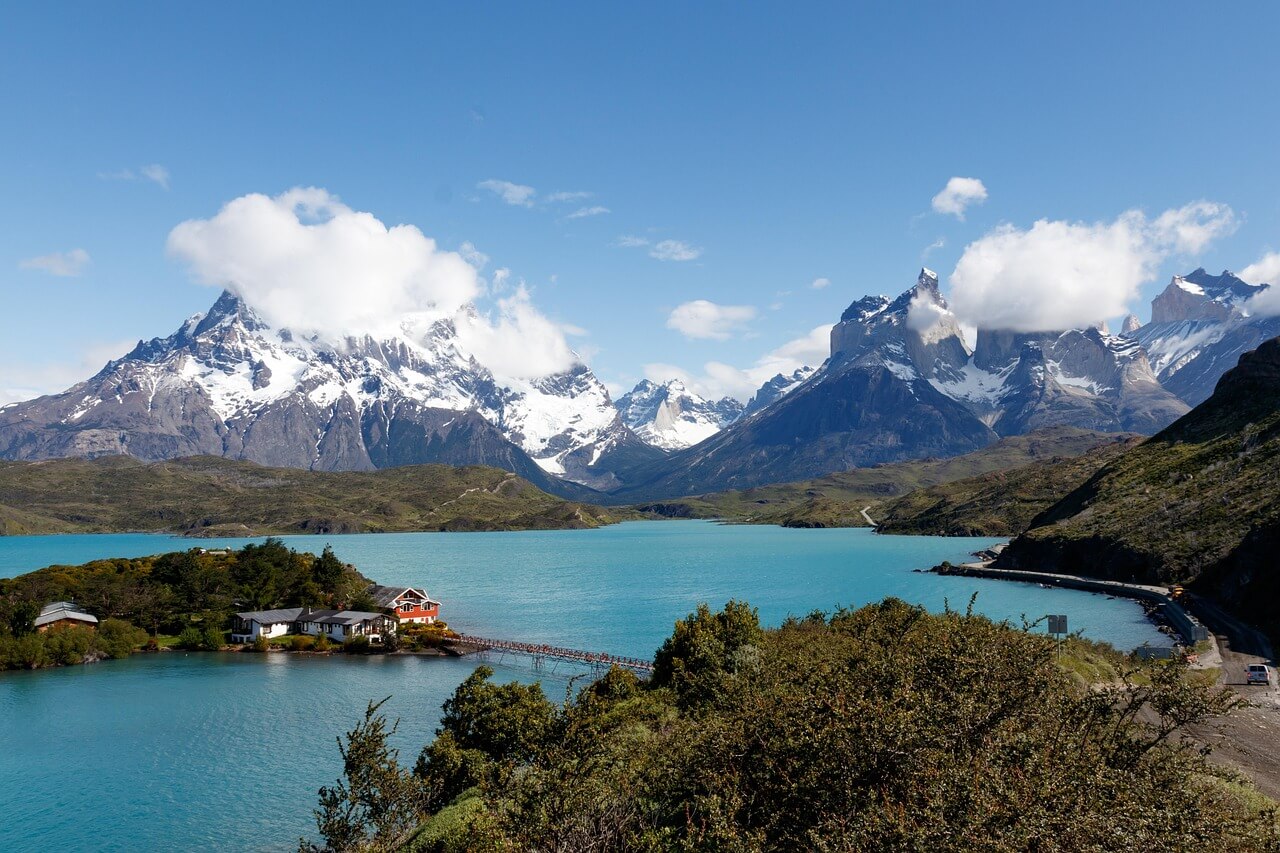When to visit Chile during the year?
Chile is a diverse country spanning various climates and regions, making it an appealing destination year-round. Summer (December to February) is ideal for beachgoers, particularly in regions like Valparaíso and the northern coast, where temperatures can reach up to 30°C (86°F). In winter (June to August), the Andes attract skiers seeking fresh powder at resorts like Valle Nevado. Spring (September to November) showcases blooming flowers in the Central Valley, while autumn (March to May) offers vibrant foliage in places like Chiloé Island. Whether hiking in Patagonia or exploring the Atacama Desert, each season brings unique experiences.
How to get to Chile?
Traveling to Chile is straightforward, thanks to its well-connected transport options. The country is primarily served by its capital, Santiago, which is a hub for flights and ground transportation. Most international travelers arrive via air, but there are also bus and train connections worth considering for regional travel.
- Main airports include Santiago International Airport (SCL), Antofagasta (ANF), and Iquique (IQQ).
- Major international routes link Santiago with all continents: from North America (Los Angeles) to Europe (Madrid), Asia (Tokyo), and Africa (Johannesburg).
- Low-cost airlines such as JetSmart and Sky Airline offer budget-friendly options.
- Flight times vary; for example, from New York to Santiago takes about 10 hours.
- Main stations are located in Santiago, connecting to cities like Valparaíso, La Serena, and Pucón.
- Popular bus routes include Santiago to Buenos Aires, and it’s a scenic journey.
- International train services are limited, but the scenic route from Santiago to Chillán is a great experience.
- Duration varies, with trips taking approximately 6-8 hours.
- Main highways include Route 5, which runs the length of the country.
- Distances from major cities include Santiago to Valparaíso (about 1.5 hours) and Santiago to Puerto Montt (approximately 12 hours).
- Expect tolls on many highways, and road conditions are generally good, but some rural areas may require caution.
Tourist activities in Chile
Chile offers travelers a wealth of activities across its diverse regions. Start in the northern Atacama Desert, famous for its otherworldly landscapes and stargazing opportunities. Outdoor enthusiasts can hike in Torres del Paine National Park in Patagonia, where stunning mountains and glaciers await. Wine lovers should explore the Central Valley, home to world-renowned vineyards and wine tours. For beach lovers, cities like Viña del Mar and Arica offer beautiful coastlines and vibrant nightlife. Additionally, partake in cultural experiences by visiting local markets in Santiago or exploring the historic streets of Valparaíso, marked by colorful houses and art.
Accommodation in Chile
Chile boasts a variety of accommodation options catering to different preferences and budgets. In major urban areas like Santiago and Valparaíso, visitors can find luxury hotels and boutique stays starting around $100 per night. For those seeking a more authentic experience, guesthouses and hostels offer rooms at more affordable prices, ranging from $15 to $50. In Patagonia, eco-lodges and cabins provide a cozy stay near nature, often starting at $70 per night. Prices tend to rise during peak tourist seasons, especially in summer and winter, so booking ahead is advisable to secure the best options.
Food in Chile
Chilean cuisine is known for its fresh ingredients, particularly seafood, and a rich blend of traditions. Must-try dishes include 'pastel de choclo' (corn pie), 'empanadas' (stuffed pastries), and 'asado' (barbecue). Popular drinks to try are 'pisco sour' and local wines, especially from the central vineyards. Street food stalls are plentiful, serving chorrillana (fries with topping) and completos (hot dogs). Dining at mid-range restaurants typically costs around $15-$30 per meal. For a local experience, visit the Mercado Central in Santiago, an iconic market known for its fresh produce and seafood.
Important numbers and information
- Emergency Services: Police - 133, Ambulance - 131, Fire Brigade - 132
- Embassy Contacts: U.S. Embassy - Av. Los Condes 9495, Santiago
- Main Airports: Santiago International Airport (SCL), Av. Armando J. A. 7170, Pudahuel
- Currency: Chilean Peso (CLP); Payment methods: Cash and credit/debit cards widely accepted
- Visa/Passport Regime: Most visitors require a passport and a visa depending on their nationality, check in advance.
What to see in Chile?
Chile is home to numerous attractions reflecting its rich culture and stunning natural beauty. Santiago, the capital, offers attractions like Plaza de Armas and San Cristóbal Hill with breathtaking views. Further south, Patagonia's Torres del Paine National Park is famous for its surreal landscapes and wildlife. The historic city of Valparaíso captivates with its colorful hillside houses and vibrant arts scene. In the north, the Atacama Desert showcases the dramatic scenery of Valle de la Luna and geysers. Don't miss Easter Island (Rapa Nui), a remote UNESCO World Heritage site renowned for its mysterious Moai statues and fascinating culture.
History, geography and climate
Chile's history is marked by indigenous cultures, Spanish colonization, and a path towards independence in the 19th century. Geographically, Chile stretches from the dry Atacama Desert in the north to the temperate rainforests and fjords of the south, featuring the Andes mountains running along its eastern border. The coastal regions are enriched with marine biodiversity, particularly in places like the Humboldt Current. The climate varies significantly: the north is arid, central regions experience a Mediterranean climate, while the south is cooler and wetter, especially in winter, with average temperatures ranging from 2°C (36°F) in the south to 32°C (90°F) in the north during summer.
Population and culture
Chile has a population of approximately 19 million people, primarily composed of Chilean mestizos, indigenous groups, and European descendants. The official language is Spanish, while Mapudungun and other indigenous languages are also spoken by some communities. Catholicism is the predominant religion, but a growing number of citizens identify with other beliefs. Rich cultural traditions are celebrated in various festivals throughout the year, such as Fiestas Patrias, which commemorates the country's independence. Chilean cuisine, music (like cueca), and dance play critical roles in cultural identity, with influences from indigenous and European heritages.








